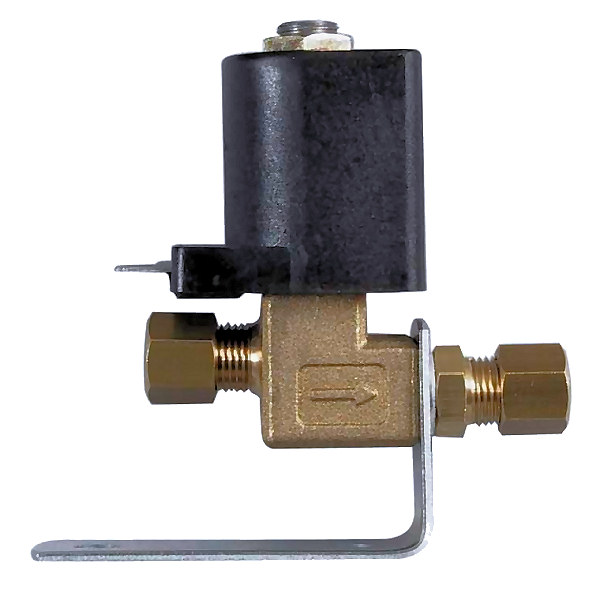

In that case, the pin is naturally held open by a spring, passage D is open, and cavity C is never able to fill up enough, pushing open diaphragm B and allowing unobstructed flow. This process is the opposite for a normally open pilot-operated valve. When the solenoid is deactivated and passage D is closed, water once again accumulates in cavity C, closing the diaphragm once the downward force exerted is great enough. With the downward force of cavity C now less than the upward force of inlet A, the diaphragm is pushed upward, thus opening the valve. Less water in cavity C means the pressure on that side of the diaphragm drops, proportionately dropping the force too.

In a normally closed valve, supplying an electric current to the solenoid will raise the pin via magnetic force, and the water in cavity C drains out through passage D faster than the pinhole can refill it. An approximate relationship between the required solenoid force F s, the fluid pressure P, and the orifice area A for a direct acting solenoid valve is: F s = P ∗ A = P π d 2 / 4, the force from cavity C pushing downward is greater than the force from inlet A pushing upward, and the diaphragm remains closed.ĭiaphragm B will stay closed as long as small drain passage D remains blocked by a pin, which is controlled by solenoid E. A small solenoid can generate a limited force. Solenoid valves are also characterized by how they operate. The solenoid valve (small black box at the top of the photo) with input air line (small green tube) used to actuate a larger rack and pinion actuator (gray box) which controls the water pipe valve.


 0 kommentar(er)
0 kommentar(er)
